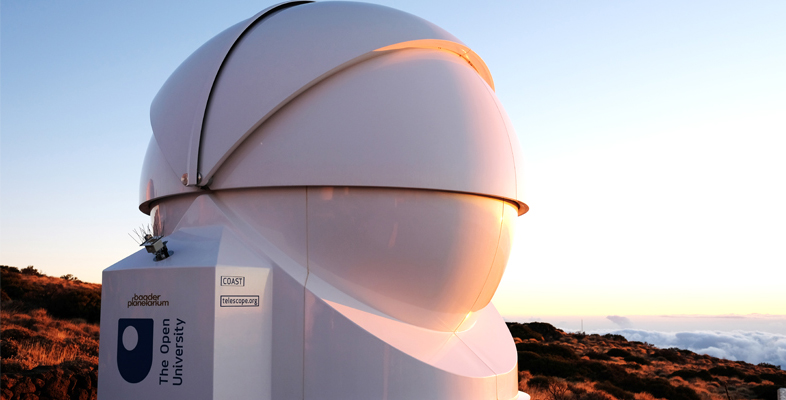1.3 Observing the night sky with dark-adapted eyes

Transcript
Now that you have a feel for how long it takes your eyes to adapt, it is time to take a look at the night sky. This activity involves a night-time observing session at a dark site.
Activity 3 Observing the night sky outdoors
A great way for you to test how good a particular observing site is and to directly see the effects of dark adaption on your vision is to count stars in a defined patch of sky.
Important: As with any outdoor activity, your safety is the most important consideration. If you are travelling to an observing site, take someone with you and make sure that someone else knows where you have gone and when you plan to return. This activity is optional and you should do it only if you have access to a site that is safe for you to use and that you are able to travel to and from safely.
- Your first challenge is to identify a good observing site, away from bright street and urban lighting. This might be your own garden or near your home but if you live in a large town or city you may need to go further afield.
- You may want to try the website: www.lightpollutionmap.info [Tip: hold Ctrl and click a link to open it in a new tab. (Hide tip)] to help you to select a suitable site. By setting the ‘Light pollution overlay’ (in the top-right of the screen) to ‘VIIRS 2018’ you can see a great deal of localised detail for most areas of the world.
- Remember to think about how safe the location is. In addition to being safer, it can be more fun to go with friends. Avoid being near roads and consider whether you need to take some warm clothes, strong footwear and maybe a nice warm drink with you. Take care when moving about the site in the darkness. (All of this applies even if the site is your own garden!).
- Once you are at your chosen location identify a patch of sky to study. Depending on where you are and what time of year it is, different patches of sky will be visible but the area contained by Orion’s body or within the wing span of Cygnus are good examples. Remember, you can always use Stellarium ahead of time to help you to plan where to look.
- With your patch of sky identified make yourself comfortable. At five-minute intervals and for at least 30 minutes (so at least seven times) make a count of how many stars you can see in that patch. While waiting between counts remember to preserve your night vision by avoiding bright lights.
- You should find that you are steadily able to see more and more stars in your chosen patch of sky. This is evidence of your eyes undergoing the dark-adaption process. You may find it interesting to compare your star counts with the number of stars shown in the Stellarium display for the same part of the sky.
Now that you know how to get the best out of your own eyesight and to find a good observing site, it is time to think about other ways of improving your view of the night sky. As you shall see in the next section, this can be done by using optical instruments such as telescopes and binoculars to increase the amount of light gathered.
